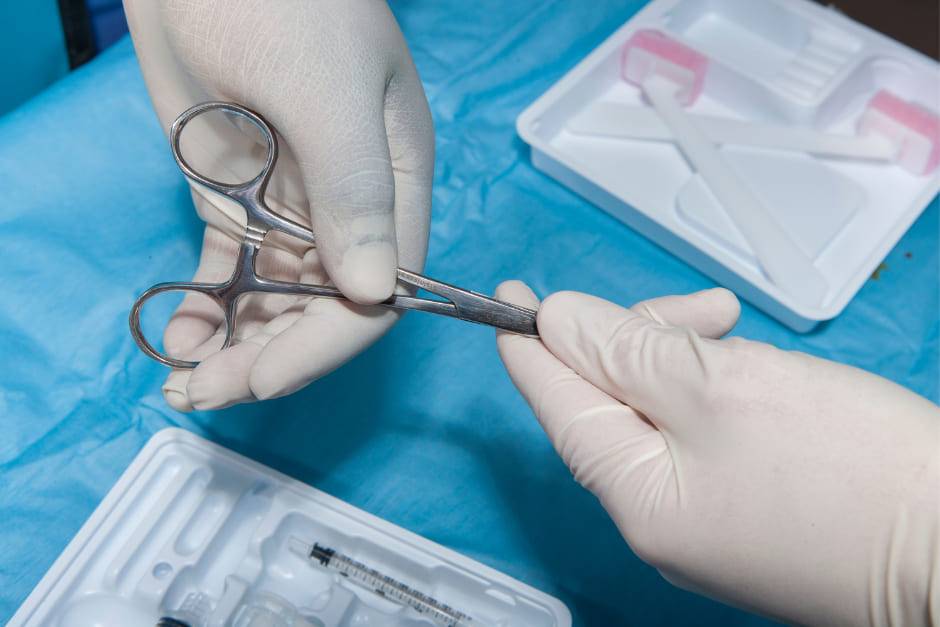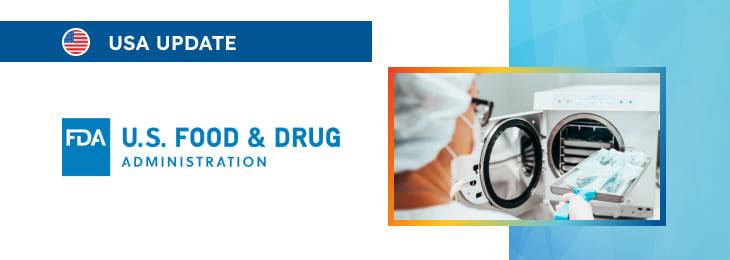The article outlines the scope of information to be included in premarket submissions depending on the sterilization methods used.

Table of content
The Food and Drug Administration (FDA or the Agency), the US regulating authority in the sphere of healthcare products, has published a guidance document dedicated to the submission and review of sterility information in the premarket notification (510(k)) submissions for devices labelled as sterile.
The document provides an overview of the applicable regulatory requirements set forth under the existing legal framework, as well as additional clarifications and recommendations to be taken into consideration by medical device manufacturers and other parties involved to ensure compliance to it.
At the same time, provisions of the guidance are non-binding in their legal nature, nor are they intended to introduce new rules or impose new obligations.
Moreover, the authority explicitly states that an alternative approach could be applied, provided such an approach is in line with the existing legal framework. It has been agreed with the authority in advance.
In particular, the guidance outlines the required sterilization information for 510(k) submissions for devices labelled as sterile. It distinguishes between established and novel sterilization methods and details the specific information sponsors must provide.
Established Sterilization Methods
According to the guidance, sponsors should ensure that their 510(k) submission includes comprehensive sterilisation information as outlined below.
Description of Sterilization Method, including:
- A detailed description of the sterilization method
- If the sterilization chamber is not rigid or fixed (e.g., flexible bag), a description of the chamber.
- For Established Category B methods (Section IV.A.2.):
- If the sterilizer is 510(k) cleared: provide the 510(k) number, make, and model. Confirm whether the cleared cycles have been altered.
- If the sterilizer is not 510(k) cleared, this must be stated.
- If the method was previously evaluated in a 510(k) or PMA, an applicant should provide the submission number or identify a Device Master File containing this information.
State whether previously evaluated cycles have been altered. - The location of the sterilization site.
- For radiation sterilization, the radiation dose should be specified.
- For chemical sterilants (e.g., EO, H2O2), the applicants are expected to provide the maximum levels of sterilant residuals on the device and an explanation of their acceptability for the device type and contact duration.
The authority also mentions that in the case of EO sterilization, CDRH accepts EO residuals information based on the standard “ISO 10993-7, Biological Evaluation of Medical Devices – Part 7: Ethylene Oxide Sterilization Residuals.”

Validation of Sterilization Cycle
When it comes to the validation of sterilization cycle, the parties responsible for medical devices are expected to provide:
- Description of the method used for sterilization cycle validation (e.g., half-cycle method).
- Identification of all relevant consensus standards used and any non-compliant aspects.
- If no recognized standard exists, a comprehensive description of the process and complete validation protocol is required.
Sterility Assurance Level (SAL)
In terms of the SAL, the submission should include:
- A statement of the SAL of 10^-6 for devices labeled as sterile, unless intended only for contact with intact skin, for which a SAL of 10^-3 is recommended.
- For alternative SALs, direct consultation and pre-submission meetings with the FDA are advised.
Pyrogenicity Testing
According to the guidance, devices should meet pyrogen limit specifications if they are implants or in contact with the cardiovascular system, lymphatic system, or cerebrospinal fluid or labelled non-pyrogenic. As further explained in the document, the sponsor should provide:
- A description of the testing method (e.g., bacterial endotoxins test (BET) also known as the Limulus amebocyte lysate (LAL) test).
- Confirmation of endotoxin testing on every batch or information about the sampling plan for in-process testing and/or finished product release.
- Identification of the chosen testing limit.
- An explanation supporting the selected endotoxin limit.
Recommended endotoxin limits for the BET are 20 EU/Device for general medical devices and 2.15 EU/Device for devices contacting cerebrospinal fluid.
The authority also mentions that additional sources of pyrogens, such as material-mediated pyrogens, should be considered in the biocompatibility assessment. For devices not required to meet pyrogen limit specifications but labeled as “non-pyrogenic” both bacterial endotoxin and material-mediated pyrogenicity testing are recommended.
Packaging Information
The submission should also include the details on the packaging information, namely:
- A description of the packaging (sterile barrier system) and how it maintains device sterility.
- A description of package test methods (not package test data).
Novel Sterilization Methods
As it was mentioned before, the scope of information to be submitted depends on the general knowledge the authority has about the specific sterilization method used. According to the document, for devices using novel sterilization methods, sponsors must provide some additional information, such as:
- A comprehensive description of the sterilization process.
- Description of the method used to validate the sterilization cycle (e.g., half-cycle method).
- The validation protocol.
- Sterilization validation data.
Furthermore, sponsors should also identify any applicable published scientific literature. It is also important to mention that the FDA may request additional information based on the specific device under review for novel sterilization methods.
Conclusion
In summary, the present FDA guidance describes in detail the scope of information to be included in premarket submissions for different sterilization methods employed by medical device manufacturers.
How Can RegDesk Help?
RegDesk is a holistic Regulatory Information Management System that provides medical device and pharma companies with regulatory intelligence for over 120 markets worldwide. It can help you prepare and publish global applications, manage standards, run change assessments, and obtain real-time alerts on regulatory changes through a centralized platform. Our clients also have access to our network of over 4000 compliance experts worldwide to obtain verification on critical questions. Global expansion has never been this simple.

